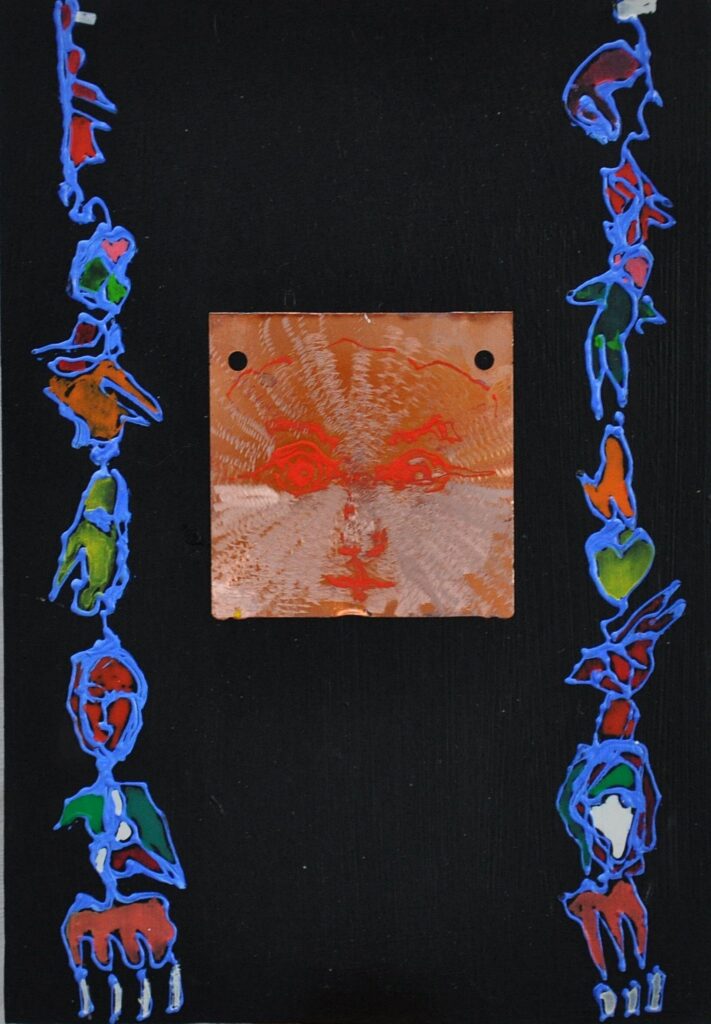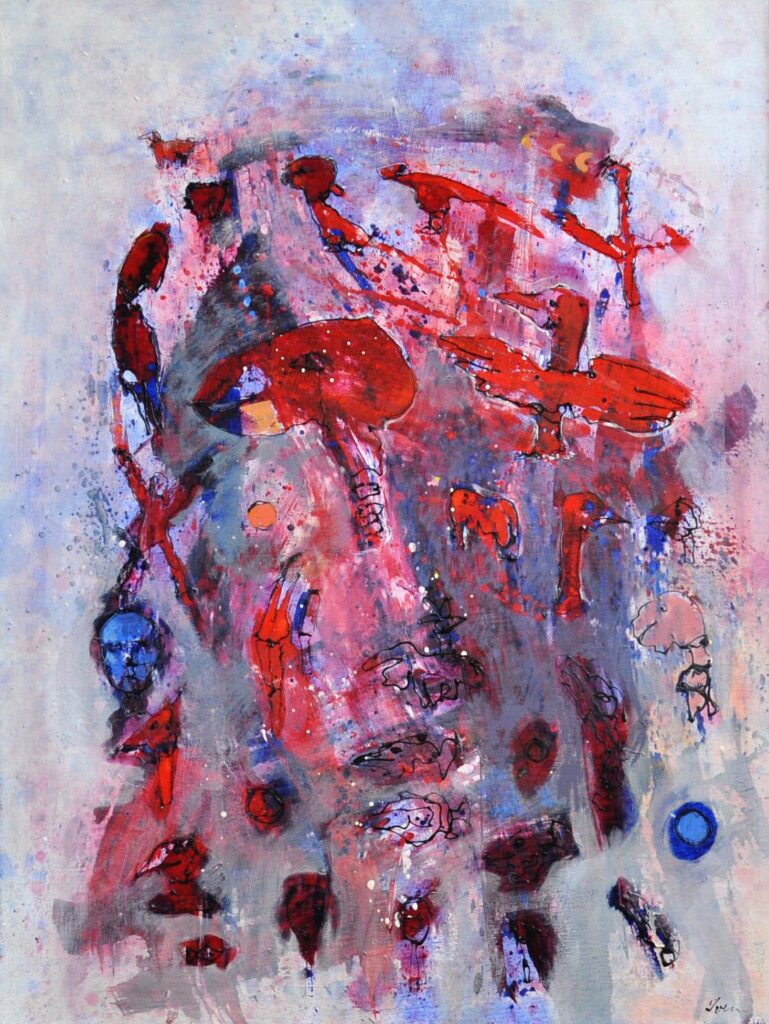At bygge bro mellem forskellige verdner af udtryk, at overskride grænsen mellem mennesker, at række ud efter det sublime, det er min udfordring og mit mål.
Derfor skal jeg manøvrere på kamppladsen mellem gamle teknikker og moderne udtryk fra vor tid. Det betyder, at jeg arbejder i to retninger. Den ene er inspireret af de gamle mestre fra det 19ende århundrede især tegnekunsten fra den såkaldte Københavner skole og dens meget grundige tekniske fundering. Den anden er en søgen efter en frihed i udtrykket, som er den eneste vej at beskrive vor tid og dermed drømmene og målene for moderne mennesker. Man kan også sige, at jeg laver moderne myter i mine fabulerende malerier, og at den tekniske fundering som arbejdet med tegning, især croquis – og modeltegning, giver, samtidig er en nødvendighed for at få den frihed, som gør fabuleringerne mulige. Derfor arbejder jeg meget intenst med tegning.
Ved at skabe nonverbale myter på mine lærreder, håber jeg at nå beskueren på en måde, som bringer os samme i forståelse og indsigt.
Selvfølgelig spørger man sig selv. Hører det nogensinde op, hvornår vil målet være nået, hvornår vil jeg have malet det billede, som er så stort og vildt, at jeg aldrig behøver at male et andet? Men sådant virker det ikke, det er snarere som en kilde, hvor jeg henter kraft til at løse de spørgsmål, som fører til det næste maleri. Det er en proces, som aldrig stopper, og hver gang en højderyg er erobret, venter en ny lige om hjørnet. Som sommeren.
Derfor er mit arbejde som kunstner både en alvorlig sag, men samtidig en stor kilde til glæde og forståelse.

A Danish writer, Elsa Gress, once said about real artists that they were like driven by demons, and being part of that scene quite involuntary, the thought often knocks on my consciousness: Why go on, why walk searching in candlelight for some road that might not be there? Why working and looking for something which might not be found – or found and quickly forgotten by oneself and also by the audience.
To me the story of the singing of the honeyant is the answer to the search and all the toils and troubles of the road.
And if you don´t remember the story – or maybe never has heard it, I will sketch it shortly in the following lines, because it so precisely tells why I for example is willing to go on painting and really not able to stop the rather tedious work.
Why.
Being engaged in a struggle for understanding and searching for an expression with the most precise and nescessary substance, I sometimes wonder: why do it? Why use so much time and so many efforts to create a work of art?
When in doubt about the meaning of it all, I remember the ancedote about the Honey Ant Song, and the sheer beauty of it makes me go on and on.
In 1971 an australian teacher Geoffrey Robert Bardon ( 1940-2003) persuaded some aboriginal men from the Pintupi tribe to make a painting on a wall of a school in Papunja, an aboriginal settlement 250 km. west of Alice Springs. The name of the painting was Honey Ant Dreaming, and it contained the secrets of the aboriginals showing the symbols from the time of creation or dreamtime, when the ancestral beings wandered the earth. The painting became the start of the Western Desert Painting Movement, and this part of the story is very well know to day as well as the marvelous art of the aboriginals.

Geoffrey Bardon with the ‘Honey Ant Dreaming’ Mural at the Papunya School
This anecdote got a new meaning for me on a juried exhibition in Roskilde in november 2011. I had received an award, and there was a session, where the judges gave their arguments for the awards. One of the judges, a very competent, young female artist, explained my picture exactly, as I had intended it in every detail. In her speech she showed a very precise understanding of the goals, the means and message. This demonstrated clearly to me, that there is a common languge some of us understand, there is a Honey Art Song and an expression, that can be transported from one human to another on many levels – and with much beauty.
That is why it is so important to go on striving to reach ones artistic goals.
